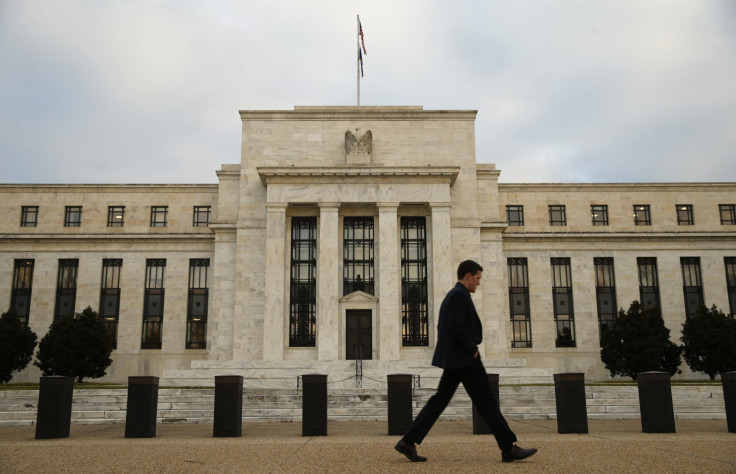Fed Officials Mull Global Financial Market Turmoil As Investors’ Expectations Diverge

As the Federal Reserve gears up to meet next month to decide the near-term course of monetary policy, investors have essentially taken it for granted that policymakers will opt against an interest rate increase. The larger question now is whether a period of heightened financial stress in recent weeks has shifted its medium-term rate projections.
Investors are looking to comments from no fewer than eight Federal Reserve speakers this week for clues about the Fed’s next step. Prominent among them is the Fed’s Vice Chairman Stanley Fischer, who in a speech Tuesday pinned the recent market turmoil on worries over growing pains in China and flagging commodity prices.
Fischer warned the market developments “could signal a slowing in the global economy that could affect growth and inflation in the United States,” but he tempered his words by adding those issues may not materialize.
“We have seen similar periods of volatility in recent years — including in the second half of 2011 — that have left little visible imprint on the economy,” Fischer said, adding that it was too early to tell whether early-2016 financial stress was just a one-off paroxysm or a symptom of deeper economic ills.
In contrast, Dallas Fed President Robert Kaplan told a Texas audience Wednesday that financial conditions had certainly tightened in the first weeks of 2016, owing largely to China. Kaplan said the developments warranted "patience" as the Fed prepares to revisit its policy expectations for the coming year.
The data underlying market sensitivities are mixed. A measure of financial stress published by the St. Louis Federal Reserve Bank showed market unease rising to levels not seen since late 2011.
At the same time, the market has seen declines this week in the so-called fear index, or VIX, used by Wall Street to gauge volatility expectations in the coming 30 days. That measure fell from five-month highs in early February back below its average since the start of the year.
“Daily volatility in the stock market is high indeed, but the market is able to overlook that,” said Jia Liu, a fellow at the nonprofit American Institute for Economic Research.
Regardless of whether volatility is still climbing or abating, the Fed is less concerned about the state of financial markets than Wall Street is, according to John Canally, chief economist at LPL Financial.
“People in the markets have a much more heightened awareness of financial volatility than the Fed does,” Canally said. “What the Fed is asking themselves is: Has all this volatility threatened the ability of companies to raise wages, for example? Or to export? Or to grow the economy?”
Market declines early this year were enough to convince investors that the Fed would stand pat. Futures data compiled by the CME Group currently indicate a mere 4 percent chance that the Fed’s rate-setting committee will tighten monetary policy in March, with a one-in-four chance of a rate hike by the end of 2016.
That conflicts significantly with the Fed’s expectations of lifting rates 4 times, for a total of 1 percent, in 2016. “There is always some disagreement between the Fed and the markets,” said Canally. “But this much disagreement? Not so much.”
Fed Chair Janet Yellen told Congress earlier this month that the Fed was on “no preset path” for coming rate moves. But some Fed officials have pushed on with their rate-hike expectations, despite signals from the market. In a speech Wednesday morning, Richmond Fed President Jeffrey Lacker indicated that monetary tightening was still on the table in 2016, calling the prospect for rate increases a “logical” view.
But policymakers are still scratching their heads over a persistently low level of core inflation, which has undershot the Fed’s 2 percent target since April 2012. Gains in the closely watched personal consumption expenditures measure have been particularly disappointing, Fischer noted, advancing just 1.4 percent year over year in December.
The slow pace of inflation has stemmed in large part from advances in the strength of the U.S. dollar, together with sinking oil prices, which have plunged more than 70 percent since mid-2014.
Though inflation has emerged in recent months for services ranging from haircuts to healthcare, soft spots have emerged in the economy. Recent indicators for both manufacturing and the service sector have flashed negative, raising concerns that economic growth could be cooling in the wake of recent market turmoil.
Those worrying signs were enough for Kaplan to urge caution this week on coming rate decisions. “In order to reach our inflation objective, we may need to be more patient than we previously might have thought,” Kaplan told the Financial Times.
Taken together, Canally said, these factors point to the Fed holding off in March but clinging to at least two or three rate hikes in 2016.
“The Fed has to accept what the market is telling them,” Canally said. “But the Fed still says four hikes. That probably can’t continue.”
© Copyright IBTimes 2024. All rights reserved.






















